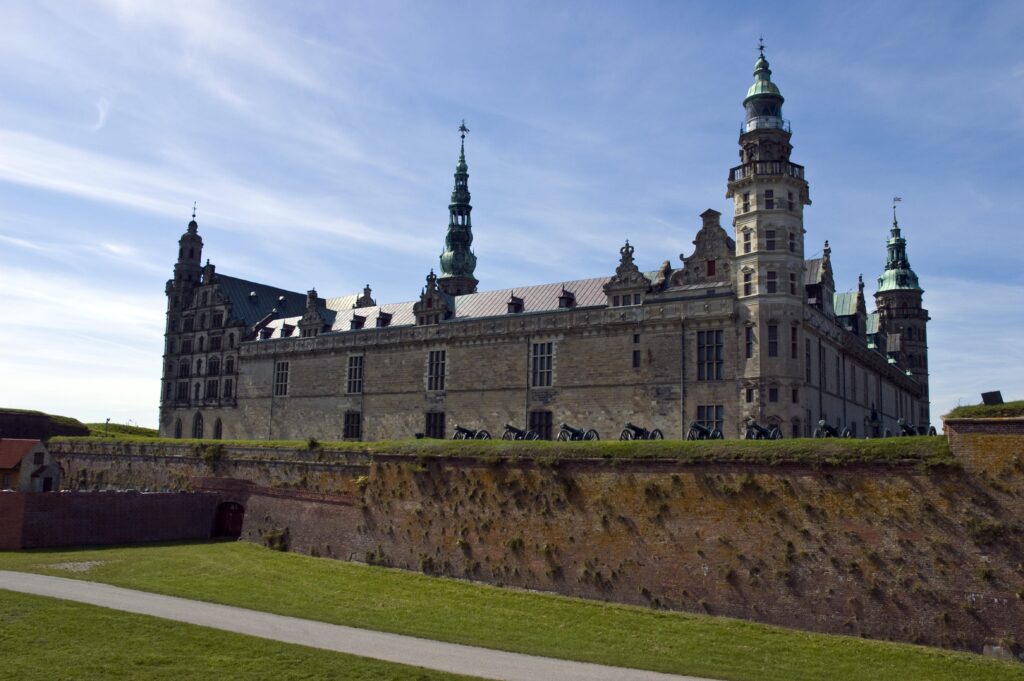Kronborg Castle: A Historical Tour of Denmark’s Iconic Fortress
Kronborg Castle, also known as “Kronborg Slot” in Danish, is a UNESCO World Heritage Site and a prominent symbol of Denmark’s rich history and culture. Located in Helsingør (Elsinore), the castle has been used in a variety of contexts over the centuries, from a royal residence to a military fortress and even a prison. This article will explore the history and significance of Kronborg Castle, providing readers with an in-depth look at this iconic Danish landmark.
History of Kronborg Castle
Kronborg Castle is a renowned Danish historical landmark located in Helsingør (Elsinore), on the eastern coast of the country. The castle dates back to the early 16th century, when it was built by King Frederick II as a strategic coastal fortress. At the time, the castle was used to help protect the Danish kingdom from foreign invasions, as well as to collect tolls from passing ships.
Over the centuries, Kronborg Castle has been used for a variety of purposes, including a royal residence, a military fortress, and even a prison. In the late 19th century, the castle was renovated by King Christian IX, who turned it into a royal palace. Today, Kronborg Castle is a popular tourist destination and a symbol of Denmark’s rich history and culture.
Architecture and Design of Kronborg Castle
Kronborg Castle is an imposing structure that dominates the Helsingør skyline. The castle is composed of four large towers that are connected by thick stone walls. The castle has a distinctive Renaissance-style design, with elements such as high gables, stepped roofs, and intricate carvings. Inside, the castle is filled with ornate decorations, including frescoes, tapestries, and furniture that date back to the 16th century.
In addition to its impressive architecture, Kronborg Castle also boasts a number of interesting features, including a large moat, drawbridges, and secret passageways. The castle also has a chapel, a royal hall, and a number of other rooms that have been preserved over the centuries.
Significance of Kronborg Castle
Kronborg Castle has a long and storied history that has had a major impact on Danish culture and identity. The castle has served as a major symbol of the country’s power and influence for centuries, and it has been used as a backdrop for a number of important events in Danish history.
One of the most significant events in the history of Kronborg Castle is the visit of William Shakespeare’s Hamlet, who is believed to have been a real person. The castle is the setting of Shakespeare’s famous play, and it continues to be a popular tourist attraction.
Today, Kronborg Castle is a popular tourist destination and a symbol of Denmark’s rich history and culture. Visitors to the castle can explore its impressive architecture, learn about its history, and take in the stunning views of the Øresund Strait.
Conclusion
Kronborg Castle is a world-renowned landmark that has a long and storied history. The castle has served as a royal residence, a military fortress, and a prison over the centuries, and it continues to be a major symbol of Denmark’s rich history and culture. Visitors to the castle can explore its impressive architecture, learn about its history, and take in the stunning views of the Øresund Strait. Whether you’re a history buff or just looking for a fun day trip, a visit to Kronborg Castle is a must for anyone interested in experiencing the essence of Denmark’s past and present. With its fascinating architecture, rich history, and breathtaking views, Kronborg Castle offers visitors an unforgettable journey through time.

